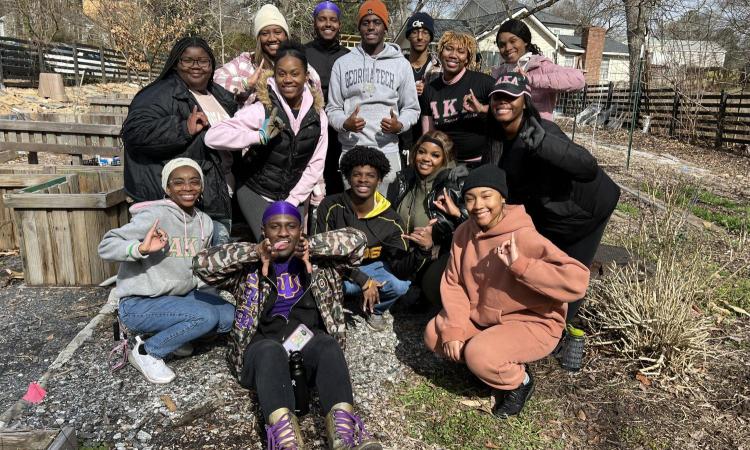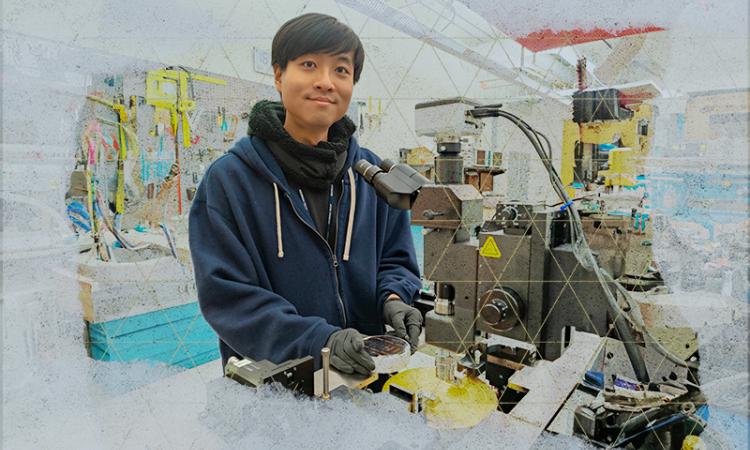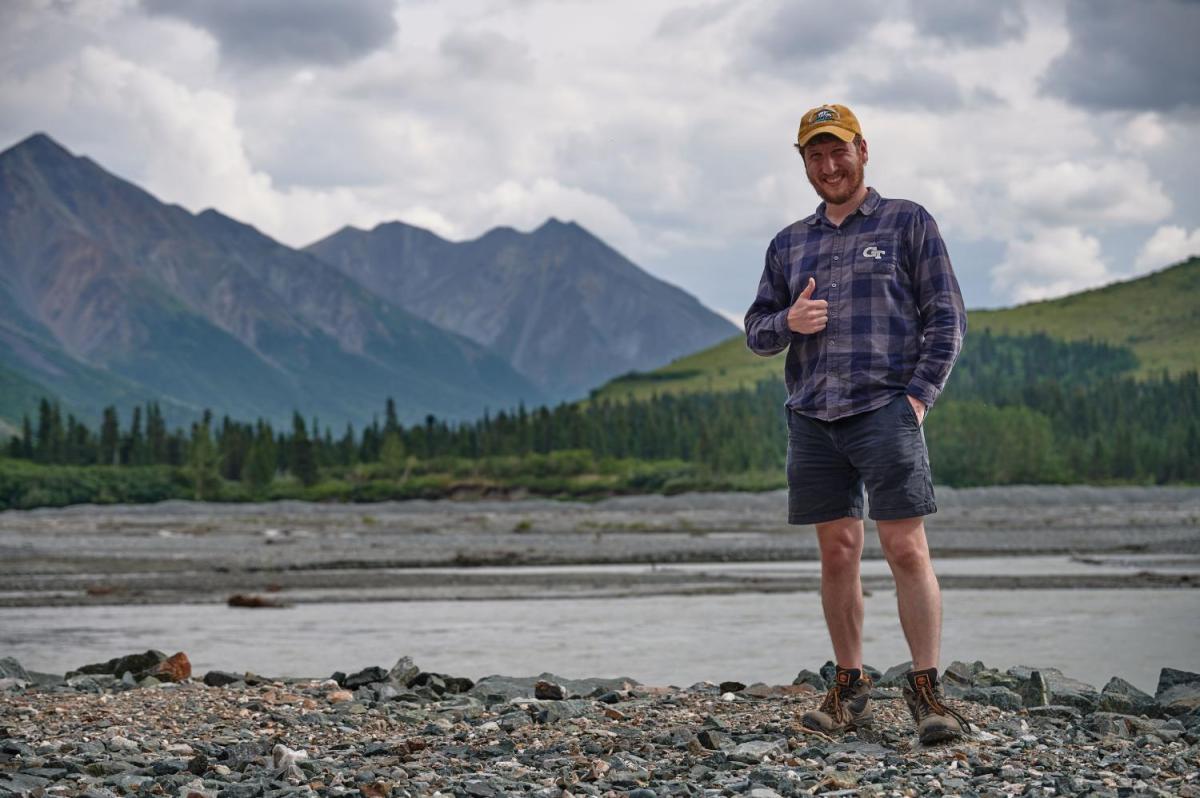
As Georgia Institute of Technology Ph.D. candidate Jeremiah Lightner returns to Alaska for a third time, he’s hoping it’ll help his research group accomplish a first in the realm of atmospheric research: to accurately create a top-to-bottom ionosphere model.
Everyday devices, like GPS, transmit signals through the ionosphere — a region of Earth's upper atmosphere containing charged particles that can reflect radio waves, enabling long-distance communication. While traveling, signals can experience an effect called Faraday rotation, which can cause location and timing errors, or a loss of signal altogether.
“An accurate profile of the ionosphere, would allow for definitive calculations of the Faraday rotation and thus increase the accuracy of devices,” Lightner said. “There’s also the potential for a complete model to facilitate an understanding of methods to de-energize the Van-Allen radiation belts in the event of a large coronal mass ejection, large solar flare, and even satellite nuclear attack.”
Lightner, along with fellow Ph.D. candidate Varun Rajput, first went to Alaska in June of 2023 as part of the Polar Aeronomy and Radio Science Summer School program, representing Professor Morris Cohen’s Low Frequency Radio Group in the School of Electrical and Computer Engineering.
The program consists of a week of lectures at the Geophysical Institute at the University of Alaska Fairbanks, while also conducting experiments at the High-frequency Active Auroral Research Program (HAARP) facility in Gakona, home to one of the world’s most capable high-power, high frequency transmitters.
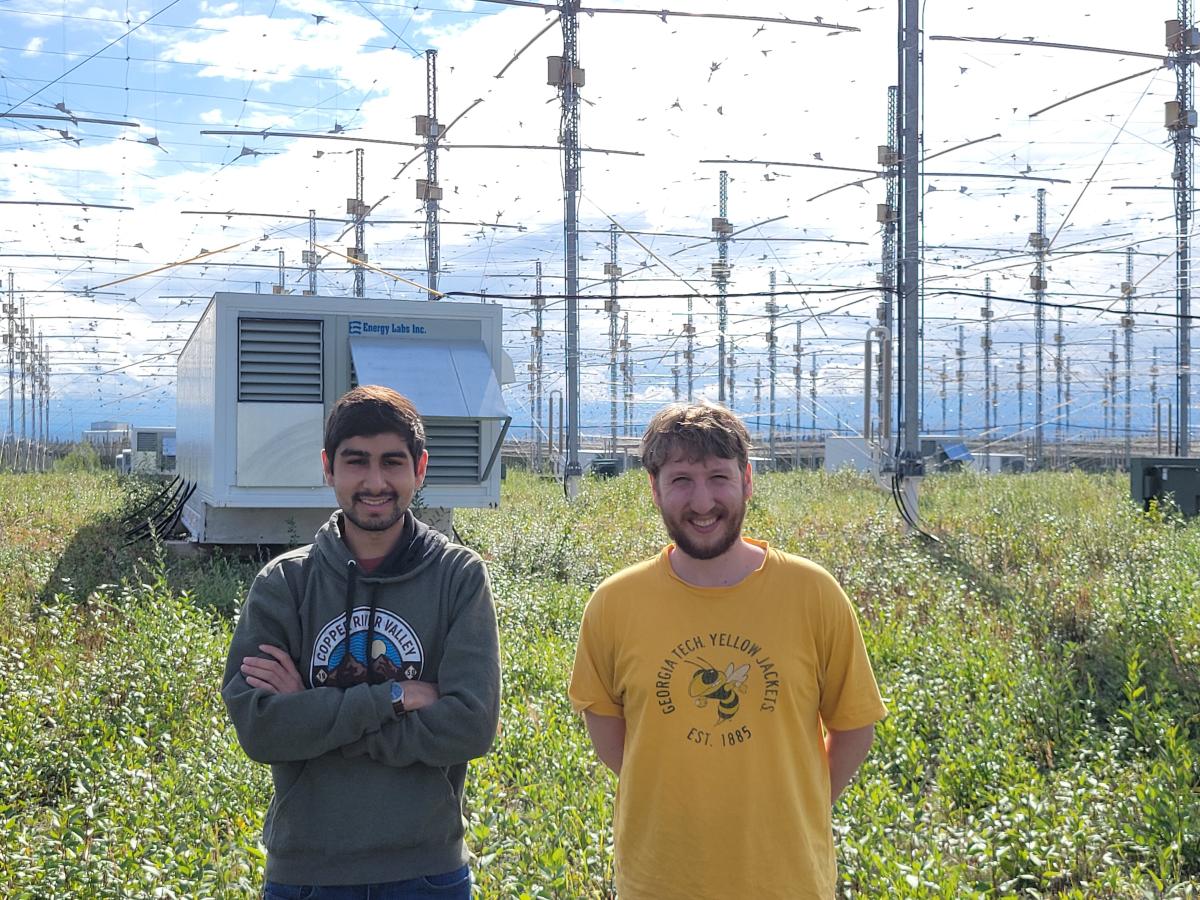
Lightner and Rajput in Alaska
The power of the HAARP transmitter allows researchers to emit radio waves into the atmosphere strong enough to induce disturbances which can be actively studied.
Probing the Ionosphere
Over the last several months, Lightner conducted a number of experiments focused on heating the D-region of the ionosphere (the region of ionization below 100 kilometers) to observe the Luxembourg effect, a phenomenon where the characteristics of one radio wave can affect those of another radio wave when they are present in the same medium.
The D-region makes for a good experimental setting because it is an area where its difficult to make in-situ measurements, as its too high for weather balloons and too low for satellite passes.
The initial experiments involved pulsing a high-power, high frequency beam of energy on and off to modulate the conductivity of ionospheric plasmas which can significantly influence radio communication by affecting the propagation of radio waves.
Using this recorded ionospheric reaction, they were able to test their models based on controlled experiments and a full-wave simulation.
North to the Future
Unfortunately, these initial experiments didn’t prove as fruitful as they had hoped.
“Our equipment had broken, and we spent several late nights try to fix things, but there’s only so many resources in rural Alaska,” Lightner said.
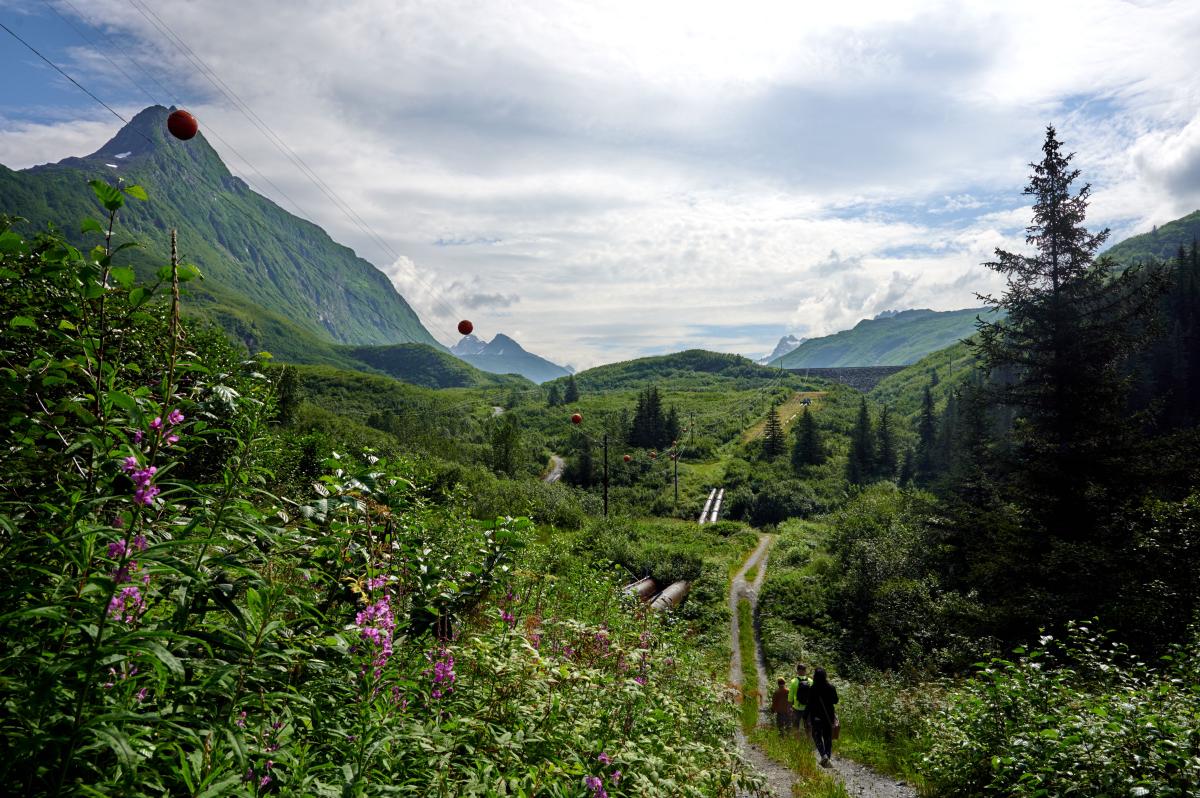
While the remoteness of Alaska may have some challenges in conducting research, its northern latitude puts it in Earth’s “auroral zone,” which is ideal for studying the very highest portions of the planet’s atmosphere.
This region provide the best opportunities for researchers to explore the complex interactions between the Earth's magnetic field, solar wind, and charged particles.
“One of the reasons HAARP was built in Gakona, Alaska was to observe whistler mode propagation and its interactions with energetic particles in there Van-Allen radiation belt,” Lightner said. “There is a lot of interesting geosciences at these higher latitudes with the Auroral Electrojet and converging B-field lines right overhead.”
Back to the “Last Frontier”
That trip ultimately served as a valuable lesson for Lightner when he returned to Gakona in November of 2023 for another round of similar experiments.
“It was a reminder that I always need to think about anything that can go wrong,” he said. "I found that the first trip cleared up most of the unknowns of conducting research in Alaska. I wasn’t sure how to format my experiment or even what went into a useful experiment until I did it once.”
The second time around the experiments were a success, with Lightner and Rajput presenting their findings at the 2023 American Geophysical Union meeting in San Francisco.
This month, Lightner will return to Alaska for the next phase of the research, this time setting up the receiver in Trappers Creek, about 100 miles away from his previous sites.
(text and background only visible when logged in)
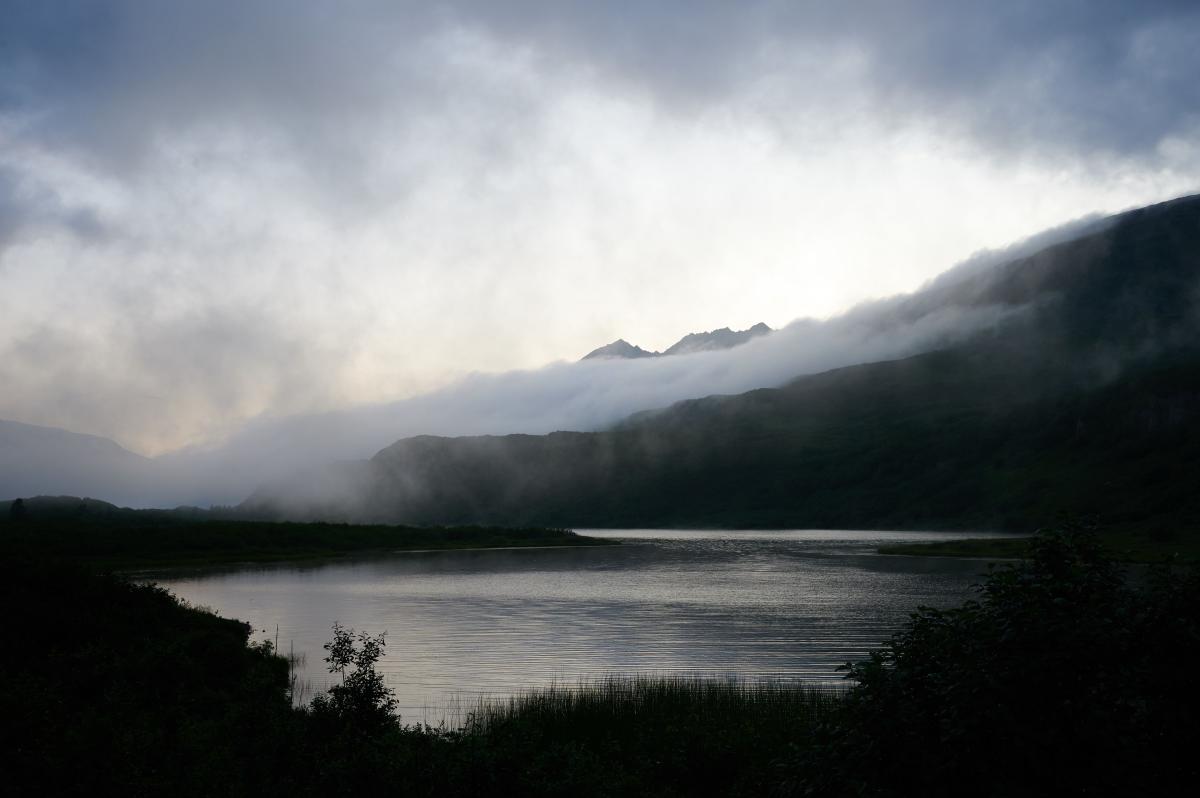
The new experiments will transition to a shorter pulse period of the beam as to mitigate any potential changes in the ionosphere between the pulses and further decouple any effects due to neutral winds in the ionosphere. He will also use a higher resolution setup for the receiver, allowing for finer observations of the broadband spectrum.
“We hope to contribute to the fundamental understanding of ionospheric weather,” Lightner said. “Along with solar wind predictions, we can help predict ionospheric storms that can impart high energy noise onto power lines or disrupting satellite communications.”
Related Content
The Role of the Divine Nine in Georgia Tech's Black ECE Community
Georgia Tech School of Electrical and Computer Engineering celebrates the legacy and contributions of the Divine Nine fraternities and sororities role in fostering community, culture, and academic support among Black students.
Lee Awarded Grant for High-Capacity Video Transmission Antenna Project
The ECE Ph.D. candidate is working to develop a highly efficient on-chip antenna array to address growing global mobile video traffic.
